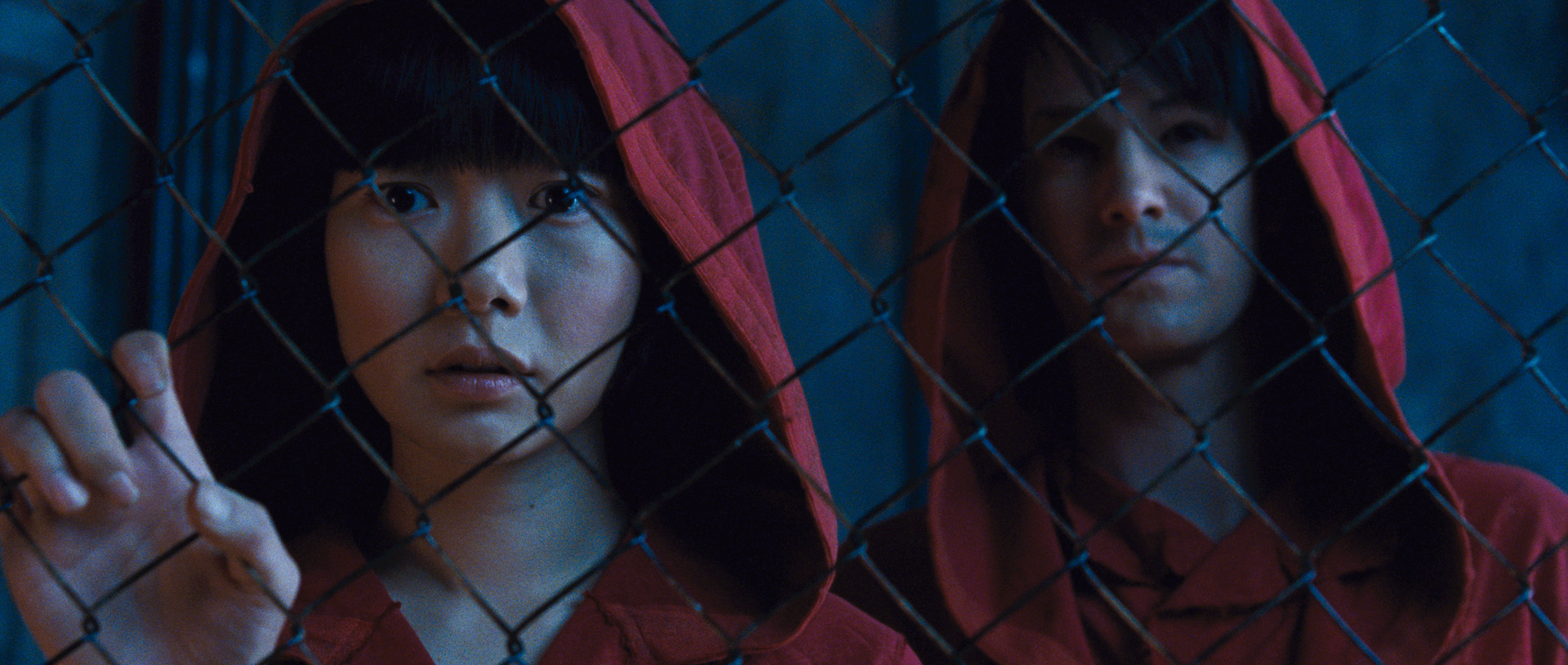 |
| [A] |
Moreover, I had not read anything about it -- which was fortunate, too -- or indeed the 2004 novel by David Mitchell which inspired the film. So I can say I watched the movie without prejudices.
It is an ambitious film. You can tell by details such as its length (165 minutes), cast (including Halle Berry, Tom Hanks, Hugo Weaving, Susan Sarandon and Hugh Grant) and by having three directors (Andy and Lana Wachowski and Tom Tykwer).
Its ambition, however, goes much further: the plot spans over four centuries, starting in an unidentified Pacific island in 1849 to end in another (apparently Hawaii). Indeed, counting a brief prologue and epilogue, the story both starts and ends beyond our planet.
The narrative is divided into six apparently separate episodes, developed in a highly non-linear fashion. In a particular case, for instance, the story of the fast-food restaurant slave-worker Sonmi 451 is told by her, while awaiting execution and presented in flashbacks, interspersed with fragments from the other stories.
 |
| [B] |
Visual and verbal cues, often subtle, appear, in order to link these episodes, resulting in a larger continuity. Sometimes these cues work flawlessly; sometimes the result is less smooth.
In particular, the more well-known actors, which often play more than one role in the overall story, performed adequately. However, as their roles vary in age, race and gender, many very familiar faces end up wearing make-up, at times to a dubious effect.
In any case, the narrative contains references ranging from the mystical to the materialist and should provide reason for reflection to viewers of a more thoughtful nature.
This brings us to what must be one of the highlights of the film: the performance of South Korean actress Bae Doona, who plays the above-mentioned Sonmi-451, in a dystopian 2144 Seoul.
In spite of the limited screen time allocated to her story, 33-yo Bae's character metamorphosed from a mass-produced worker, indoctrinated to obey, serve and fear her oppressors -- literally a well-behaved child by design -- into a heroic figure of rebellion and serenity in tragedy, displaying at equal parts dignity and courage; the kind of character who deservedly becomes a legend.
This may sound silly, but I could not avoid being misty-eyed with Bae's unforgettable performance, nothing short of exceptional.
While this is a visually impressive film, to me its visual aspect comes only fourth, after the script itself, Bae's outstanding work, and the movie's very inspired soundtrack.
Composed by Tom Tykwer, Johnny Klimek and Reinhold Heil, the soundtrack deserves special reference. Directed by Kristjan Jarvi and performed by the Leipzig Radio Symphony and Choir, the soundtrack, on the basis of a shared motive, incorporates layers corresponding to the different epochs covered by the story, providing a musical link unifying the narrative, without overdoing the basic motive.
It's not surprising Cloud Atlas has attracted polarized reviews. As my description may suggest, this is not an easy film and it shall demand the viewers' attention.
Cloud Atlas is well worth it.
----------
Image Credits:
[A] Source: Cloud Shapes in Blue Sky - Italian Sonnet.
[B] Source: Book review: Cloud Atlas, by Karen Tay.
[C] Source: Cloud Atlas, by Michelle McCue

No comments:
Post a Comment